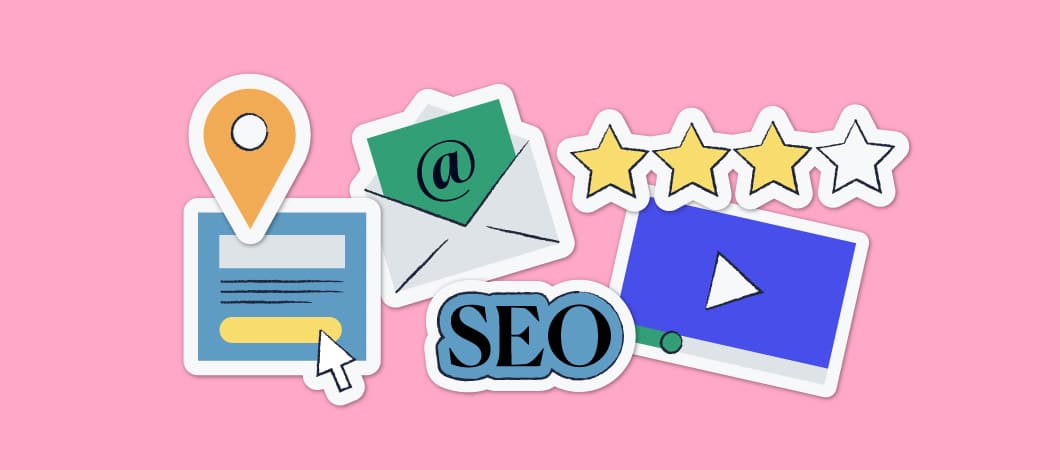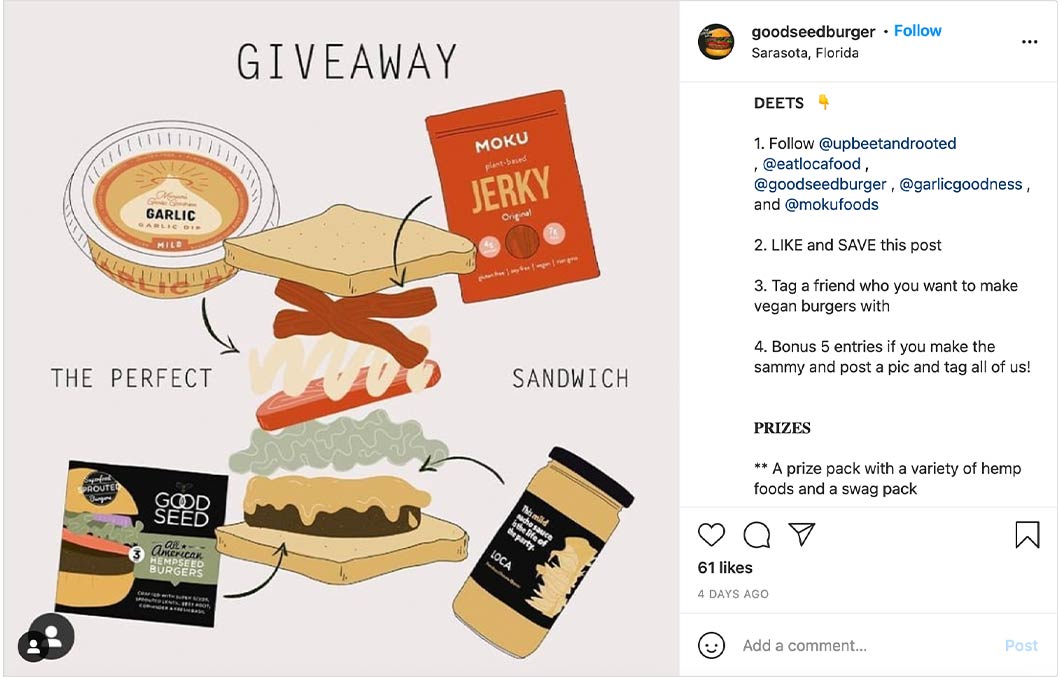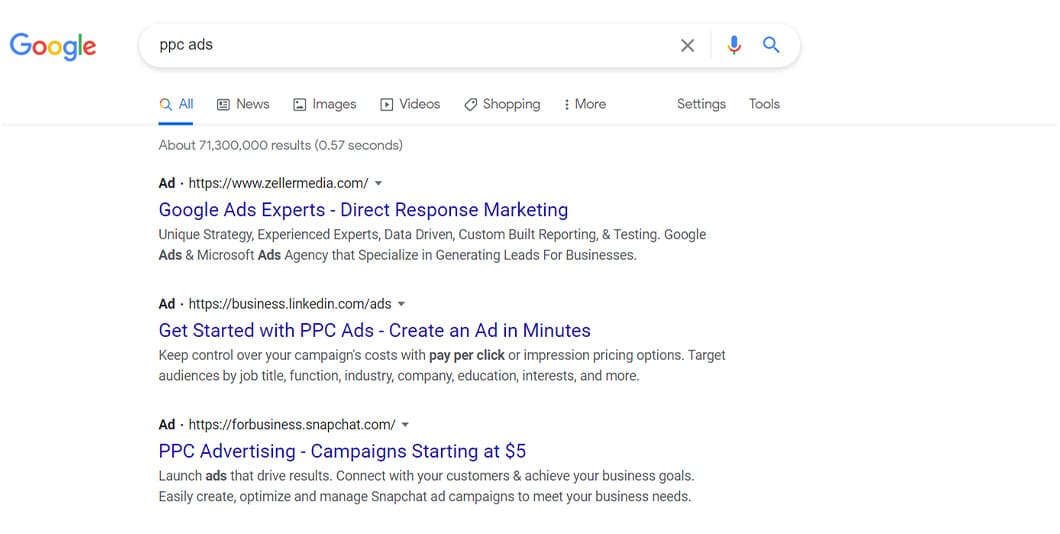Did you know half of small business owners have no marketing plan in place? If you’re reading this, your small business is probably one of them.
While you might hand out promotional items with your logo (think of the labeled toothbrushes your dentist gives out or the branded pens doled out at trade shows), what else can you do to market your brand?
We’re here to help answer that question. Here are 14 of the best marketing strategies for small businesses.
1. Personalize Content
According to Evergage’s Trends in Personalization Survey, nearly 3 out of 4 respondents said personalization had an extreme or strong impact on advancing customer relationships.
Personalized content can be used in emails, survey requests, suggested purchase items, calls to action and promotions, among others.
Peter Horne, content lead at personal injury law firm Geoff McDonald and Associates, P.C., shares his organization’s technique. “We personalize our strategies by focusing on content that relates to our audience as well as our brand.”
“A lot of this content involves car accidents because we’ve found that to be one of the leading causes for our clients to seek us out, but then we also focus on other niche injury categories, such as construction site injury or workers’ compensation.”
Horne goes on to say, “You need to know what your audience would want from your brand, and utilize that knowledge to personalize your marketing effectively.”

2. Focus on Content Marketing
“Once you have established a brand, identified your target market and created a website … content is key,” says Clare Jones, outreach manager for Custom Neon.
She notes quality content that’s engaging and consistent is often an overlooked strategy, but it’s one of the most beneficial long-term marketing plays a business can employ.
“The strategic use of content enables you to create positive experiences, interact with customers, relay important messages, demonstrate why consumers should choose you (without a hard sell), answer questions and really build your brand as an entity that can be trusted. This trust will generate more leads which will eventually translate to sales.”
Content strategy tactics could include these:
- Ebooks
- Videos
- Podcasts
- Blog posts
- Newsletters
- Infographics
- Industry-specific interviews
- Business case studies
- Guides and how-tos
- Social media competitions
Quality content also helps with search engine optimization (SEO). As well as generating a loyal following, it also helps establish you as an authority in your field.
However, Jones warns, “It’s not about blasting out as much content as you can and hoping for success. You need to work SMART.”
“You can use a myriad of tools to give you a better understanding of what to write,” she shares, noting such marketing tools as BuzzSumo, Ahrefs and SEMrush.
Content marketing is so vital that roughly 60% of survey respondents noted it as very important or extremely important to their overall marketing strategy, according to HubSpot’s Not Another State of Marketing Report (2020).
3. Prioritize Search Engine Optimization
Many say SEO is one of the best ways to market a small business, particularly over the long term.
Blandine Mathieu, founder and creative director at NiceDay, advises small business owners to “learn to love SEO.” After all, about half of marketers believe SEO tactics to be a very effective marketing strategy, according to HubSpot’s Not Another State of Marketing Report.
“Contingent upon your business model, you’ll want to either focus on general SEO tactics or local SEO tactics,” says Mathieu.
“If local (which most small businesses are), you should set up a Google My Business account, list yourself on appropriate directories (stay specific to your industry), encourage reviews, actively engage with customers on the platforms, create a dedicated page to each of your products on your website while optimizing for local/long-tail keywords and constantly create unique content that aligns with your brand voice and identity.”
Mathieu goes on to say, “SEO is not a one-and-done type exercise, and it takes time to impact your business, but your tomorrow will thank your today if you start doing [SEO] right now.”
Other SEO-ranking tactics include these:
- Meta details
- Backlinking
- Using strategic keywords
- Optimizing page loading speeds
- Optimizing for mobile devices
-
SEO as an Effective Marketing Strategy
About 60% of traffic goes to websites in the top 3 ranking spots on search results pages, and more than 50% of website traffic is generated through organic search results, reports Lyfe Marketing.
4. Invest In Pay-Per-Click Advertising
Another online marketing strategy for small businesses is pay-per-click (PPC) advertising. PPC can refer to paid ads on social media platforms, but it can also refer to paid ads on search engines. Any time someone clicks on a PPC ad, the advertiser pays a fee.
Here are a few examples. You can tell these are PPC ads because they have the word “Ad” in the result.
While PPC costs range depending on factors such as keyword competition, when it comes to Google Ads, the average cost-per-click is $1-$2 on the Search Network. In contrast, the average cost-per-click on the Display Network is less than $1, according to recent data from WordStream.
As with any advertising, the goal is to get viewers to buy. With that in mind, wouldn’t spending $1 for a click that leads to a $100 sale be a great return on investment? That’s the idea behind PPC marketing.
-
PPC as an Effective Marketing Strategy
The average click-through rate for retargeted ads is 10 times higher than the average click-through rate for display ads.
5. Leverage Social Media Marketing
Another online marketing strategy for small businesses is to advertise on popular social media platforms, such as Facebook, Instagram and LinkedIn.
Zachary Lezberg, founder and CEO of Small Business Expo, recommends “using marketing dollars to capture email addresses through social media advertising, which directs people to sign up on a page on your website.”
Lezberg goes on to say, “Once you’ve captured potential customer’s names and email addresses, you can continue to market to them throughout the year with email marketing featuring news, special offers and information that might be applicable to them.”
Facebook Ads
Pavel Stepanov, CEO of Virtudesk, offers this advice: “Using Facebook ads and utilizing social media are some of the most cost-effective digital marketing strategies for small businesses.”
Stepanov adds: “Today, Facebook ads can be accessible and affordable. You can have a wide array of configuration options in order to optimize campaigns and reach millions of people. The total cost is much lower than traditional ad placements, which are often used in magazines, newspapers or other print media.”
“Now, you can create hyper-targeted campaigns where you can control exactly who sees your ads, which makes cost per click and cost per conversion much lower and return on investment (ROI) much higher.”
Stepanov shares Virtudesk’s experience: “We have launched many successful Facebook Ads campaigns that center around the user experience. We have a combination of multi-image carousel ads, videos, Instagram and Facebook Story ads, Messenger Ads and more. We include lead magnets in many of our campaigns, and follow up with leads through email nurture campaigns. From Facebook Ads alone, we have been able to double our lead generation.”
Additionally, Stepanov also advises small businesses to use social media to post organic content, which is free or low-cost and which allows businesses another way to connect with consumers and grow a loyal following. “It’s a place your business can have conversations with leads and customers about your products or services, their pain points and more.”
“At Virtudesk, we have used social media to connect with other pages, accounts and individuals. We use it as a channel to post content, such as blogs, webinars, guides and other free content.”
Use hashtags relevant to your content and target audience, and tag contributors and organizations involved in the post content too.
6. Use Email Marketing
Logan Mayville, business development and marketing specialist at Post Modern Marketing, asserts: “Almost every small business owner has an email list, but very few of them are actually using them effectively beyond simple mass blasts.”
Instead, Mayville advises they create automated workflows for each of the following:
- Hot leads
- New customers (upsell/cross-sell)
- Past customers
- Cold leads
“Investing 5-10 hours into writing and configuring the automation can pay off for years,” says Mayville.
According to HubSpot’s Not Another State of Marketing Report, these specific aspects have been shown to improve email marketing engagement:
- Audience segmentation
- Email copy
- Personalization
- Email design
- Email frequency
7. Market Locally
In addition to local marketing online, advertise your business in your actual neighborhood, city and region.
Jeff Moriarty, marketing manager at Moriarty’s Gem Art, shares that his company pushes ads in a 1-mile radius from his store, marketing locally and using Facebook.
“Because we are in the center of our town square, our goal is to get shoppers around the area to stop into our store. To do this, we offer a free jewelry cleaning as a way to have them stop in and browse while they wait. It has worked very well at getting new customers that didn’t even know we were there.”
Additionally, Blandine Mathieu of NiceDay goes on to offer this advice for marketing locally: “Spend time investing in your community by hosting events, building local partnerships, teaching courses, etc. From word-of-mouth to local papers and news stations covering your efforts, you’ll be surprised at just how far doing good will take you.”
Depending on your business and target customer, consider advertising on local TV or radio, billboards or bus benches. Use Groupon® or LivingSocial or invest in direct mail coupons. Sponsoring local sports teams or organizing local charity events is another option.
8. Share Your Expertise
Whether in your local community or online, share your know-how with others who could benefit. It’s a win-win: You’re able to market yourself and your business, while others can develop their skill set.
Julian Goldie, CEO of Goldie Agency, offers these knowledge-sharing marketing techniques for small businesses:
- “Sign up for HARO (Help a Reporter Out) and react to journalist questions. These are normally written on well-known blogs, and a listing or backlink from one of these is beneficial to your credibility.
- “Participate in online communities, such as Quora, and address questions there.
- “Participate in related social media forums on your areas of expertise.
- “Organize webinars and podcasts on subjects that are both helpful and important. Invite other professionals to help you gain more exposure and scope.”
9. Network
You can also use online forums to network with other industry professionals. Don’t neglect local meet-and-greets with other entrepreneurs either. Hand out business cards and connect the face with a name. Establishing industry connections could prove valuable in terms of referral business.
Consider joining your local Chamber of Commerce or signing up for networking events offered through business organizations, such as SCORE or your local Small Business Development Center.
Other networking and relationship marketing opportunities to consider include:
- Private clubs
- University events
- Industry conferences
- Volunteering events
- Professional associations
10. Partner With Others
This is another top marketing strategy for small businesses. Why? Partnerships are reported to drive 23% of a company’s overall revenue. Additionally, 49% of those surveyed saw revenue rise, and nearly the same percentage saw brand awareness increase.
Consider establishing a brand partnership in your community or online. For instance, if you run an event planning business, you could partner with a photographer, a caterer or a DJ. On a more popular scale, consider the partnership between Uber Eats and local eateries. You could also partner with online micro-influencers (social media users with a large following).
11. Create Loyalty Programs
Do you know 83% of shoppers say loyalty programs increase the likelihood they’ll become returning customers? And that’s just from the buyer’s side of things. The same study shows that loyalty programs also give 64% of retailers a better way to connect with their customers.
Think of your local coffee shop or boutique business with a loyalty card you can have stamped with every purchase – buy 9, get the 10th free, or something along those lines.
You can also think of this in terms of how corporate grocery stores or pharmacies implement this strategy. Customers register for a store card to earn loyalty savings and perks. These might include special loyalty member discounts, a percentage off a purchase after spending a certain amount or a free meal.
12. Ask for Referrals
Many small businesses use referral marketing as a tactic to attract new clients. Not surprising, considering 68% of marketers believe referred leads are of good or excellent quality, according to the B2B Demand Generation Benchmark report.
Illia Termeno, founder of Fractional CMO, had this to say on the topic: “Most people see referrals as the most trusted and influential form of promotion because they bring about significant results and require relatively little financial investment. They are based on existing relationships with your best customers, which fosters even more engagement and loyalty.”
Additionally, “Customers you gain through referrals are more likely to become high-value customers … and are more likely to refer someone else.”
Termeno also says that referral programs are easy to track, with tools allowing business owners to automate numerous tasks, from generating referral codes to arranging payments.
You can also offer incentives for referrals, such as Charles Leduc, Chief Operations Officer at Mold Busters, suggests. Of his company’s referral strategy, he shares: “That simple act boosted the amount of inspections we were performing by 20% in the first year after accounting for natural sales growth.”
13. Request User-Generated Content
User-generated content (UGC) is what it sounds like, content your users submit in favor of your brand. It can be submitted and used on your website, on social media, in emails, in videos and more. Often, UGC is submitted in response to a contest call requiring users to post a photo or video for a chance to win a prize.
You can think of UGC as a type of word-of-mouth marketing. And because UGC comes from real people, it’s generally seen as more believable and trusted by viewers.
According to HubSpot’s Not Another State of Marketing Report, user-generated content is neck in neck for effectiveness when it comes to engaging users on social media (photo, video and text-based posts came out ahead).
Here’s an example of a giveaway in which the company not only requests a follow, like and save but also asks users to tag a friend. The company also offers bonus entries for photos posted.

14. Ask for Customer Reviews
Chad Sakonchick, founder of Better Legal, shares, “Customer reviews are a great way to build your credibility as a business and boost customer engagement.” He also says reviews offer an opportunity to increase conversions and attract new customers from the review platforms.
He advises: “As soon as you get the first satisfied customers, you should ask them to leave their feedback about the experience with your business on public platforms, for example, Trustpilot, G2 Сrowd, etc. Then you should use these reviews in all your online communication – on key pages of your website, on social media, in emails, in search ads and even offline.”
He suggests requesting customer feedback by sending a personalized message or a handwritten note. You could also send automated messages after a sale requesting a customer review.
What Different Marketing Strategies Will You Use?
Here are some questions to ask before starting any new marketing tactic:
- Who is my target audience?
- What is my budget?
- What resources will I need (e.g., tools and personnel)?
- Who are my competitors?
- What advantage do I have over my competitors?
- What am I hoping to achieve with my marketing efforts?
- How will I measure the results of my marketing strategy?
- What business objectives will my marketing strategy support?
According to CoSchedule, 313% of survey respondents were more likely to report marketing success with a documented strategy in place. Additionally, those with set marketing goals were 376% likelier to be successful.
Now that you know a few of the best marketing strategies for small businesses, which ones will you start implementing?











